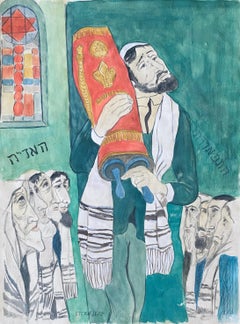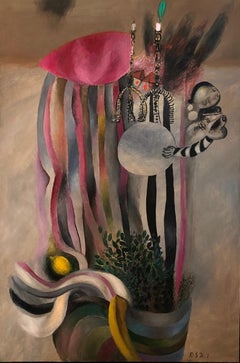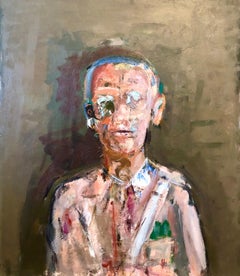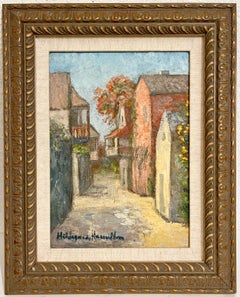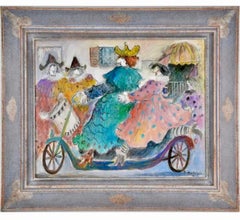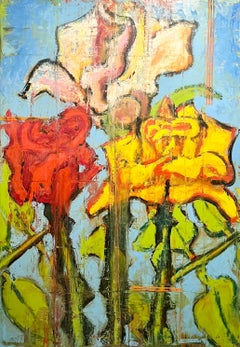Lions Gallery Figurative Paintings
20th Century Modern Figurative Paintings
Ink, Watercolor
20th Century Modern Abstract Paintings
Canvas, Oil
1970s American Modern Figurative Paintings
Oil, Board
Mid-20th Century American Impressionist Landscape Paintings
Canvas, Oil
20th Century Figurative Paintings
Canvas, Oil
Early 2000s Contemporary Figurative Paintings
Linen, Oil
20th Century Modern Figurative Paintings
Canvas, Oil
20th Century American Modern Figurative Paintings
Monotype
20th Century American Impressionist Figurative Paintings
Oil
21st Century and Contemporary Pop Art Figurative Paintings
Wood, Paint, Latex
1960s American Modern Figurative Paintings
Paint, Paper
1960s Abstract Expressionist Abstract Paintings
Canvas, Jute, Oil
1960s Surrealist Figurative Paintings
Canvas, Oil
1980s Surrealist Figurative Paintings
Paper, India Ink, Watercolor
1980s Surrealist Figurative Paintings
Paper, India Ink, Watercolor
Late 20th Century Surrealist Figurative Paintings
Paper, India Ink, Watercolor
1980s Neo-Expressionist Figurative Sculptures
Wood, Oil
Mid-20th Century Expressionist Figurative Paintings
Canvas, Oil
Early 20th Century Post-Impressionist Still-life Paintings
Oil, Panel
Late 20th Century Contemporary Figurative Paintings
Wood, Mixed Media, Oil
20th Century Abstract Figurative Paintings
Wood, Lacquer
21st Century and Contemporary Abstract Figurative Paintings
Wood, Lacquer
21st Century and Contemporary Abstract Figurative Paintings
Wood, Lacquer
Mid-20th Century Modern Portrait Paintings
Canvas, Oil
20th Century Modern Figurative Paintings
Oil
20th Century Post-Impressionist Figurative Paintings
Canvas, Oil
20th Century Abstract Figurative Paintings
Canvas, Oil
Mid-20th Century American Modern Figurative Paintings
Oil, Board
1980s Pop Art Figurative Paintings
Mixed Media, Acrylic, Pigment, Screen
1990s Surrealist Abstract Paintings
Mixed Media, Spray Paint
1990s Abstract Paintings
Mixed Media, Spray Paint
1990s Surrealist Abstract Paintings
Mixed Media, Spray Paint
1990s Surrealist Abstract Paintings
Mixed Media, Spray Paint, Acrylic
1990s Contemporary Abstract Paintings
Mixed Media, Spray Paint, Acrylic
1990s Street Art Abstract Paintings
Mixed Media, Spray Paint, Acrylic
1990s Outsider Art Abstract Paintings
Mixed Media, Spray Paint
1990s Pop Art Figurative Sculptures
Slate
20th Century Surrealist Figurative Paintings
Screen
1970s American Modern Landscape Paintings
Oil, Board
20th Century Expressionist Landscape Paintings
Canvas, Oil
20th Century Folk Art Figurative Paintings
Canvas, Oil, Acrylic
1960s Expressionist Still-life Paintings
Oil, Canvas
21st Century and Contemporary Contemporary Figurative Paintings
Mixed Media, Paint, Board
20th Century Contemporary Figurative Paintings
Paint, Mixed Media, Board
20th Century Modern Portrait Paintings
Canvas, Mixed Media, Acrylic
Early 20th Century Realist Portrait Paintings
Oil
1960s Surrealist Figurative Paintings
Oil, Panel
Mid-20th Century Expressionist Figurative Paintings
Woodcut
Mid-20th Century Folk Art Figurative Paintings
Oil, Board
20th Century Expressionist Figurative Paintings
Oil, Panel
20th Century Expressionist Figurative Paintings
Mixed Media, Watercolor, Gouache
1970s Modern Abstract Paintings
Ink, Watercolor, Gouache
Early 2000s Abstract Expressionist Figurative Paintings
Canvas, Oil
Early 2000s Abstract Expressionist Figurative Paintings
Canvas, Oil
20th Century Modern Figurative Sculptures
Mixed Media
20th Century Post-Modern Figurative Paintings
Paper, Oil Crayon, Mixed Media, Watercolor
20th Century Post-Modern Figurative Paintings
Paper, Oil Crayon, Mixed Media, Watercolor
20th Century Post-Modern Figurative Paintings
Paper, Oil Crayon, Mixed Media, Watercolor
Early 2000s Pop Art Figurative Paintings
Wood, Paint
20th Century Surrealist Mixed Media
Paint, Paper, Mixed Media, Watercolor, Gouache
